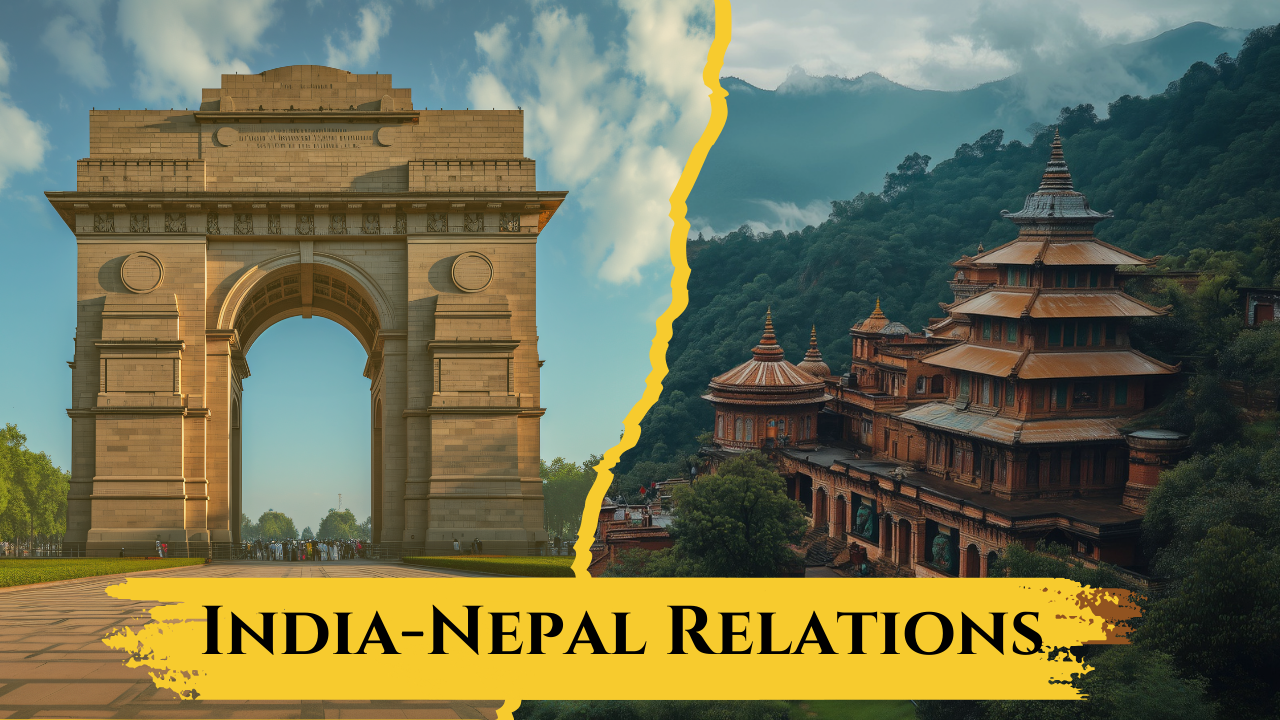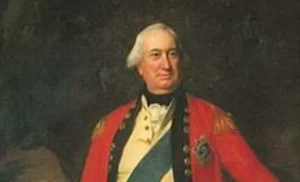Font size:
Print
India-Nepal Relations
Context : India-Nepal Relations
India has contributed to Nepal’s Prime Minister’s Disaster Relief Fund to aid victims of recent floods and landslides.
Nehru Era (1947-1964)
- Treaty of Peace and Friendship (1950): This treaty allowed free movement of people between the two countries and established a framework for mutual security, reflecting India’s intent to maintain influence over Nepal and ensure stability in the region.
- Support for the 1951 Democratic Revolution: India supported the overthrow of the Rana oligarchy, which was seen as a means to promote democracy and stabilise Nepal, thus countering any potential external influences.
Indira Gandhi Era
- Economic Assistance: Under her leadership, India provided substantial aid for infrastructure projects like roads and irrigation, facilitating Nepal’s development.
Rajiv Gandhi Era (1984-1989)
- Security Cooperation: India provided military training and equipment to the Nepalese Army to combat the Maoist insurgency, reflecting India’s commitment to Nepal’s internal security.
Narasimha Rao Era (1991-1996)
- Treaty of Trade and Transit (1991): This treaty ensured Nepal’s access to Indian markets, facilitating trade and enhancing economic ties. It also strengthened the economic interdependence between the two countries.
- Support for Democracy: India backed the pro-democracy movements during the 1990 People’s Movement, which led to a constitutional monarchy, reinforcing India’s role as a supporter of democratic processes.
Manmohan Singh Era (2004-2014)
- 2006 Peace Agreement: India supported the peace process that concluded the civil war in Nepal. Indian officials facilitated dialogue between the Maoists and the Nepalese government, helping to achieve the Comprehensive Peace Accord.
- Hydropower Cooperation: India and Nepal signed various agreements for hydropower development projects, such as the Arun III project, to enhance energy cooperation and support Nepal’s economic growth.
Modi Era (2014-Present)
- Modi’s Visit to Nepal (2014) provided Nepal with a $1 billion line of credit for infrastructure projects.
- Reconstruction Aid Post-2015 Earthquake
- Kalapani Border Dispute (2019): India’s release of a new political map that included disputed territories like Kalapani led to tensions with Nepal. Nepal responded by releasing its own map, asserting its claims to the area, reflecting the complexities of the relationship.
- Infrastructure Projects: Modi’s government has initiated several infrastructure projects in Nepal, including road construction, railway connectivity, and energy projects, to enhance economic cooperation and counter Chinese influence.
Areas of Cooperation
- Economic and Commercial Cooperation
- FDI and Trade: Indian firms account for 33.5% of FDI in Nepal (approx. USD 670 million). Nepal is India’s 17th largest export destination, with trade totaling $8.85 billion, where India comprises 64.1% of Nepal’s total trade.
- Education
- Scholarships and Training: India offers over 1,500 scholarships annually for Nepali students. Since 2001, around 38,000 Nepalis have benefited. The Indian Technical & Economic Cooperation (ITEC) program has trained over 2,000 Nepali professionals since 2007.
- Culture
- Cultural Initiatives supported by initiatives like the Swami Vivekananda Centre for Indian Culture and the B.P. Koirala India-Nepal Foundation, fostering educational and cultural cooperation.
- The “roti-beti ka rishta” concept symbolises the profound familial, social, and cultural bonds between India and Nepal.
- Defence Cooperation
- Military Relations: India and Nepal maintain a strong defence partnership, with mutual visits and cooperation in the Gorkha Regiment, involving around 32,000 Gurkha soldiers in the Indian Army.
- Connectivity and Development Partnership
- Infrastructure Development: India is the largest developmental donor to Nepal, focusing on infrastructure projects like the Tribhuvan Airport and rail links. Initiatives include cross-border pipelines and community development projects.
- Power Sector Cooperation
- Energy Collaboration: The Joint Vision Statement on Power Sector Cooperation aims to develop power generation, cross-border transmission, and bidirectional power trade, with Nepal earning NPR 10-15 crores daily through power exports to India.
Challenges in Relations:
- Kalapani-Limpiadora-Lipulekh Issue: The 2019 release of India’s political map, which included Kalapani, led Nepal to assert its claim with a new map, causing diplomatic friction and rising nationalism.
- Perceptions of Interference: Allegations of Indian interference in Nepal’s domestic politics foster suspicion and resentment .
- Economic Dependence: Nepal’s reliance on Indian imports, especially during the 2015 blockade, has prompted calls for diversifying economic ties, as this dependency is viewed negatively.
- Chinese Influence particularly through the Belt and Road Initiative.
- Political Instability in Nepal
- Cultural and Ethnic Tensions: The marginalised Madhesi community’s grievances over representation have led to tensions, particularly when India is perceived as supporting their cause.
- Water Resource Management:Disputes over river sharing and management complicate relations, despite existing treaties and ongoing implementation issues.
- Public Sentiment and Nationalism: Rising nationalist sentiments in Nepal can lead to anti-India rhetoric and protests, impacting bilateral goodwill.
- Trade Barriers and Economic Policies: Non-tariff barriers imposed by India on Nepali goods can lead to economic grievances and tensions in trade relations.
Subscribe to our Youtube Channel for more Valuable Content – TheStudyias
Download the App to Subscribe to our Courses – Thestudyias
The Source’s Authority and Ownership of the Article is Claimed By THE STUDY IAS BY MANIKANT SINGH





